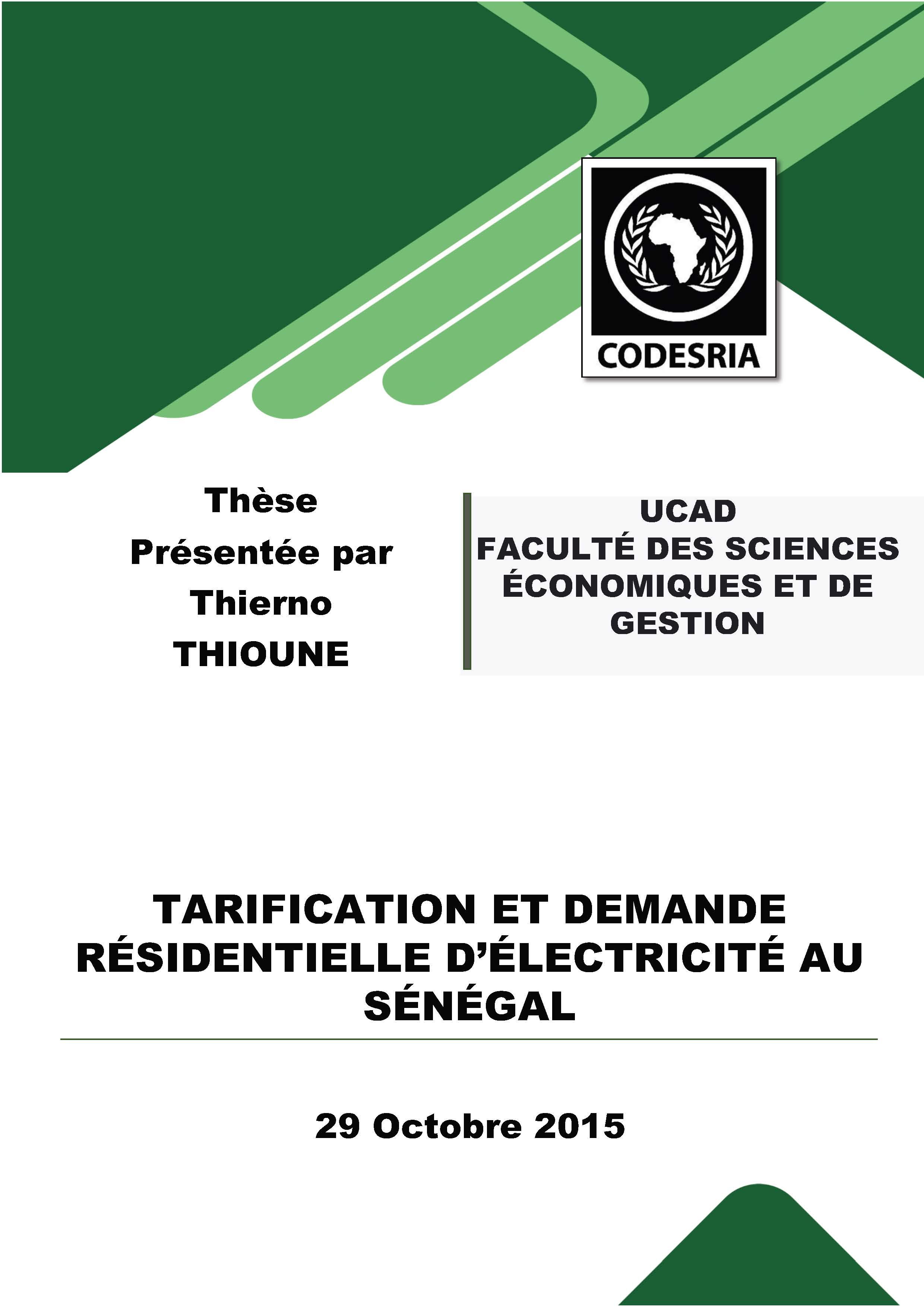TARIFICATION ET DEMANDE RÉSIDENTIELLE D’ÉLECTRICITÉ AU SÉNÉGAL
Keywords:
Electricity, Pricing, Demand, Households, Elasticity, Pseudo-panelSynopsis
Energy policy has always been at the heart of the concerns of public decision-makers in Senegal. Significant resources are mobilized for its implementation, a heavy burden for public finances. Its application, in terms of appropriate sectoral policies including good pricing policy in relation to the current difficult environment, impact on electricity demand of households. In this thesis, we study the explanatory factors of the demand for electricity in the residential sector in Senegal and the effects of the pricing on this request. We apprehend it by the calculation of elasticities. The methodology used is based on a model of expenditure of Stone (1954) on pseudo-panel data. Our results show that with the exception of the variable "number of pieces" variables are significant and have an effect on the expense of household electricity. Better analysis of the expenditure of electricity depending on the level of life shows that the pricing of electricity impact pas of the same scale the expense electricity of easy, average and modest households.
Downloads
References
Clark A., et al., (2005). Power Sector Reform in Africa: Assessing the Impact on Poor People, Étude commandée par la Banque mondiale, mars 2005
CRSE (2010). Décision n° 2010-03 relative aux conditions tarifaires de SENELEC pour la période 2010-2014
Diagne, Y. S., Diop, M. M. (2007). Quelles solutions à la hausse continue de la facture publique pétrolière : maintien des appuis à la consommation ou libre fixation des prix par le marché ? DPEE Document d’analyse N° 06, p.29
Doucoure, F.B. (2005). Méthodes économétriques : cours et travaux pratiques, 2éme édition Faseg, Ucad.
Eboue, C. (1995). Les facteurs de performance de l’entreprise, éd. aupelfuref, John Libbey Eurotext. Paris, pp. 185-186.
ENERDATA SA (2009). Le marché de l‟énergie au Sénégal Paris, Rapport pays
Faruqui, A., Eakin, K., (2000). Pricing in competitive electricity markets, Kluwer Academic Publishers
FMI (2010). Perspectives de l'économie mondiale : reprise, risques et rééquilibrage, Études économiques et financières, p. 225
Gardes, F. (1999). L'apport de l'économétrie des panels et des pseudopanels à l'analyse de la consommation, Économie et statistique, N° 324-325, pp. 157-162.
Girod, J. (I992). Les industries électriques du Burkina-Faso, de la Côte d‟Ivoire, du Mali et du Sénégal : performances et modèles organisationnels, Institut d’Énergie et de Politique de l’Énergie, Grenoble
Glavitsch, H. et al. (2004). A flow-based methodology for the calculation of TSO to TSO compensations for cross-border flows, International Journal of Electrical Power & Energy Systems, Volume 26, Issue 1, pp. 49-56
Greene, W. (2005). Économétrie, Éd. Pearson Éducation, 5éme édition France, pp. 272-273
Haghighat, H., et al. (2008). The role of market pricing mechanism under imperfect competition, Decision support systems, Vol. 45, Issue 2 pp. 267-277






